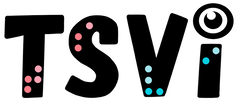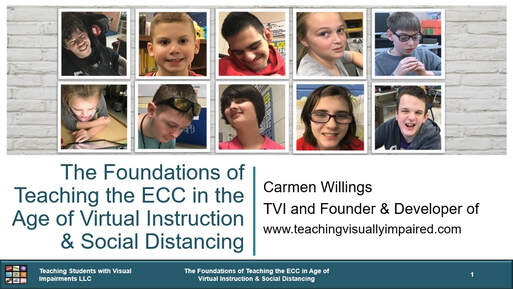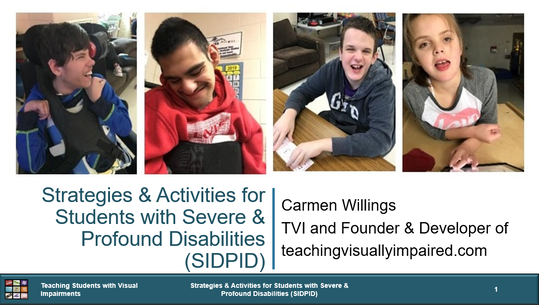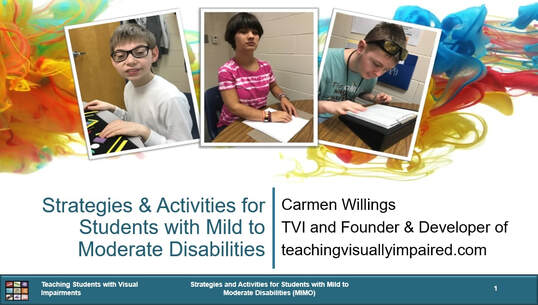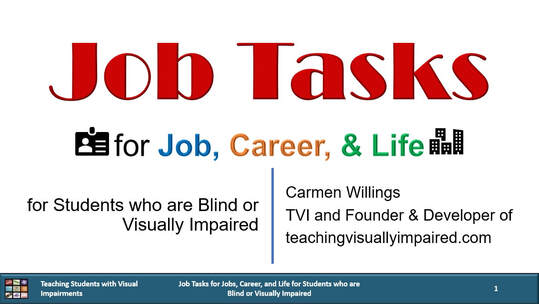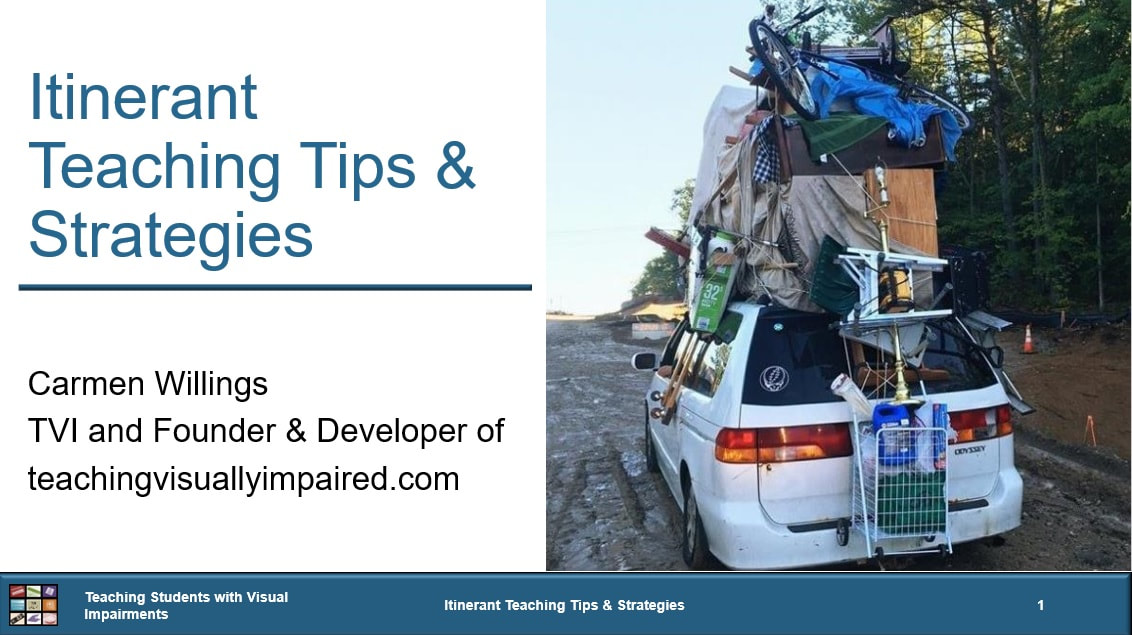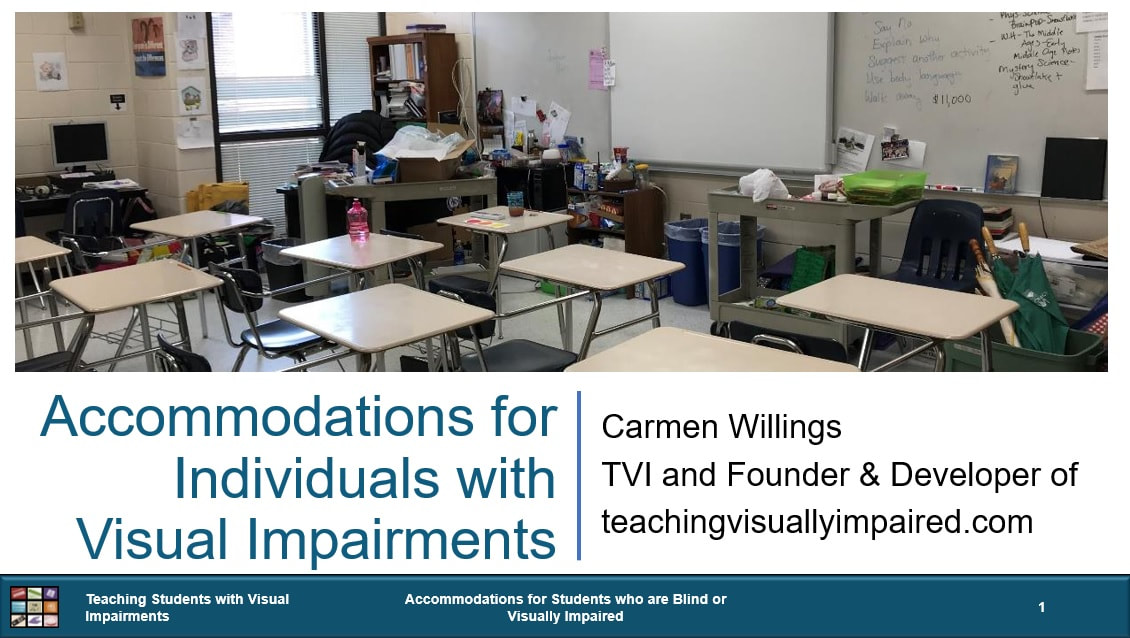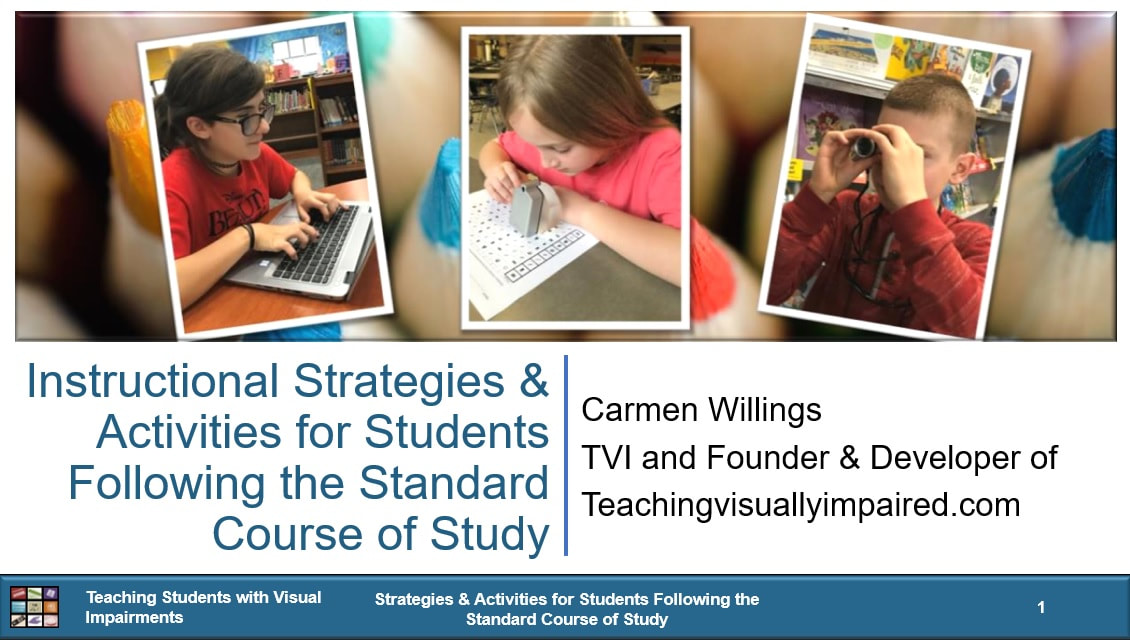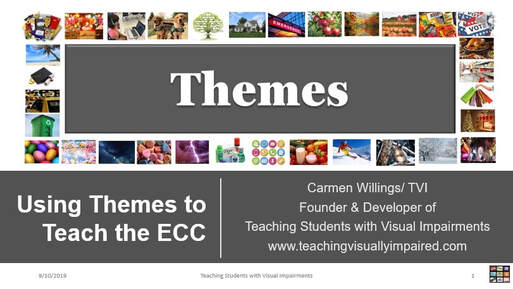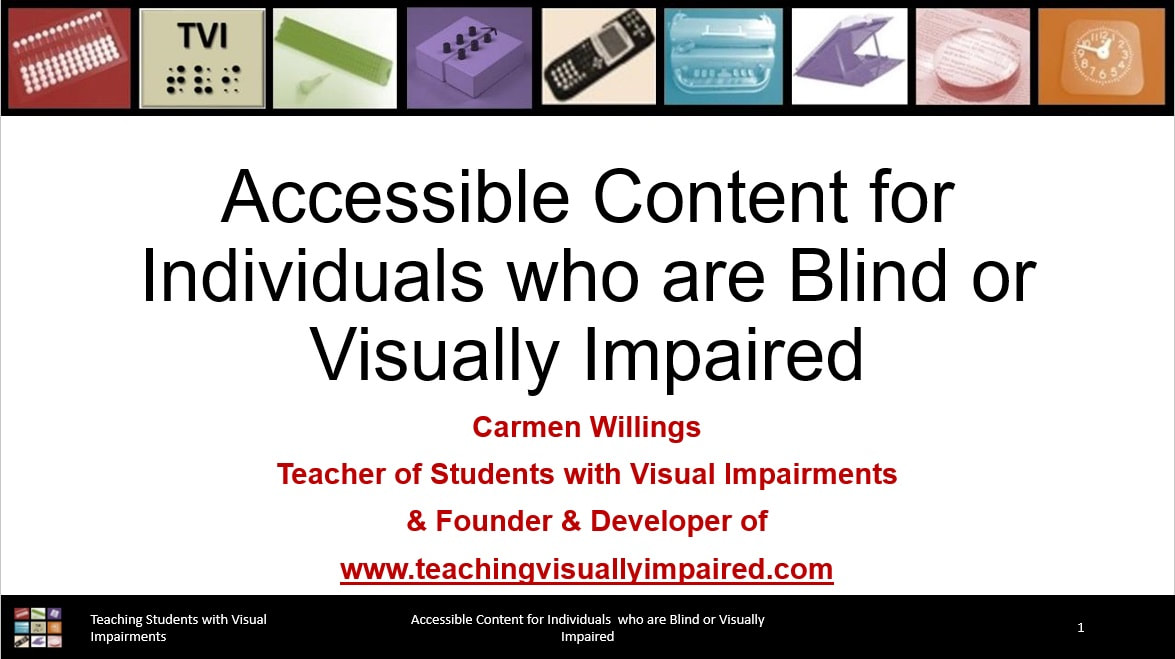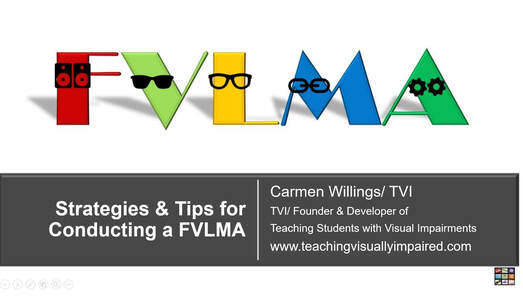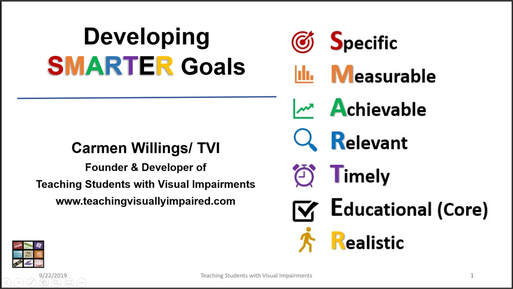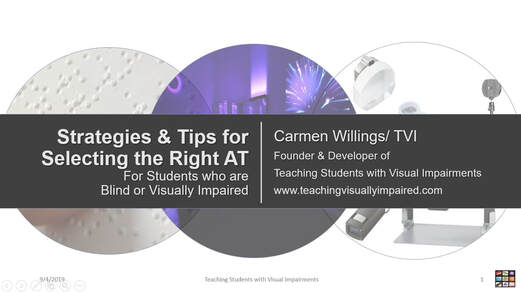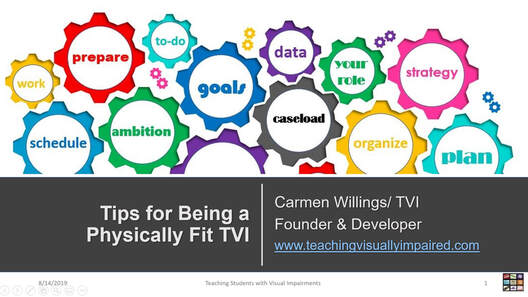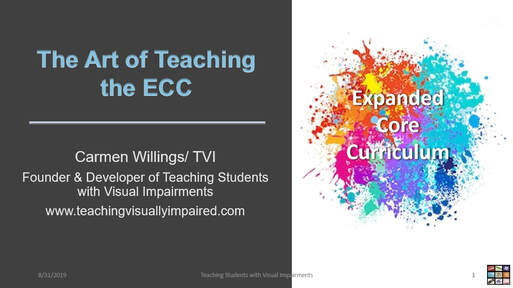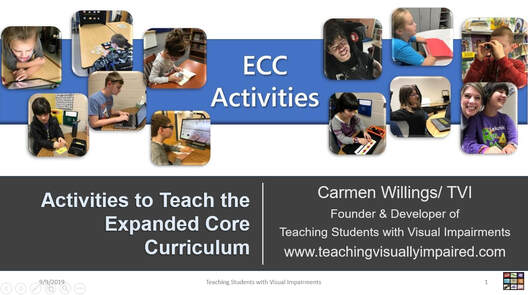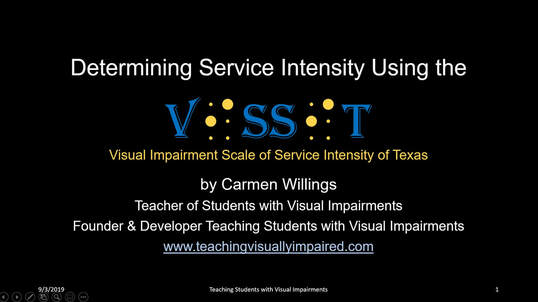- Home
-
Learn
- History of VI >
- Legislation & Laws >
- Vision Professionals >
-
VI Program Resources
>
- Program Printables
- Itinerant Teaching Tips
- Year at a Glance
- VI Program Handbook
- Caseload Analysis
- Organization & Time Management
- Professional Development
- Teacher Standards
- Professional Ethics
- Awards & Recognition
- APH Scholar Program
- Professional Organizations
- Certification Organizations
- Dealing with Challenges
- Professional Publications >
- Relatable Books for All Ages >
- Family Resources >
- Plan
- Basics
-
Teach
- Teaching Strategies >
-
Compensatory Skills Instruction
>
-
Social Skills
>
-
Self Determination
>
- Body Image & Acceptance
- Making Personal Goals
- My Vision Presentation
- My Self-Description
- Create a Personal Data Sheet
- Disclosure Decision
- Disability Statement
- Requesting Help
- Fighting Fears
- My Circle of Support
- Personal Responsibility
- Advocate for Safe Enviroments
- Having Picture Taken
- Coping with Change
- Aging Eyes
- Physical Characteristics
- Political Activism
- Laws Regarding Persons with Disabilities
-
Sensory Efficiency
>
-
Independent Living
>
- Orientation & Mobility Instruction >
- Recreation & Leisure >
-
Career & Vocation
>
-
Grow
- Complete Set Bonus >
-
Recorded Presentations
>
- Webinar: Tips for Being a "Physically Fit" TVI
- Webinar: The Art of Teaching the ECC
- Webinar: Virtual & F2F Strategies
- Webinar: Foundations of Teaching the ECC in the Age of Virtual Instruction
- Webinar: Itinerant Teaching Strategies
- Webinar: Using Themes to Teach the ECC
- Webinar: Conducting a FVLMA
- Webinar: Selecting the Right AT
- Webinar: Developing SMARTER Goals
- Webinar: Determining Service Intensity Using the VISSIT
- Webinar: Activities to Teach the ECC
- Webinar: Accessible Content for BLVI
- Webinar: Accommodations for VI
- Webinar: MIMO Strategies & Activities
- Webinar: SIDPID Strategies & Activities
- Webinar: Standard Course of Study Strategies & Activities
- Webinar: Job Tasks for Job, Career & Life
- Shop
- Jobs
Recorded Presentations
Taking initial coursework to become a vision professional is not enough to become or remain an effective vision professional. Part of professional practice is to remain a lifelong learner and stay current with developments in the field of visual impairments and also stay on top of current trends. This includes engaging in ongoing professional development to expand and develop your professional knowledge and skills. I have created a series of recorded presentations to support fellow TVI's. Once purchaed, the associated presentation page will be unlocked and you will have access to the recorded presentation, slide handout for taking notes, and full transcript. When you finish watching the presentation and taking notes, take the short quiz/survey to demonstrate participation and receive a certificate of attendance. Purchase eCourse access today and then follow the links below to watch and learn at your leisure.
Need to use a purchase order? Contact me so your school district, program or organization can establish me as an approved vendor.
Subscribe to Teaching Students with Visual Impairments and Access ALL Presentations
Foundations of Teaching the ECC in Age of Virtual Instruction & Social Distancing
|
We were all thrown a curve ball at the end of the 2019-2020 school year when schools around the country closed and moved to virtual instruction. We scrambled to figure out how to teach our students online. Unfortunately, COVID-19 did not go away over the summer and as schools prepare to open with social distancing guidelines, we now need to learn how to safely teach our students from a distance of six feet and wearing PPD. An added challenge is the uncertainties of toggling between face to face instruction and virtual instruction as buildings open and close. My objectives for this presentation are to discuss the impact but also discuss strategies for still successfully serving students whether you are using face to face instruction or providing virtual instruction. Either way, you will still want to review records to get to know the student and ensure you are meeting their current needs, collaborating with teams and providing instruction no matter the student’s placement.
|
Strategies & Activities for Working with Students with Severe & Profound Disabilities (SIDPID)
|
This presentation provides instructional and communication strategies for working with students with severe and profound disabilities who are functioning between a birth to two-year-old level. It also provides suggestions for setting up sensory environments and creating adapted materials, so the student has activities to interact with no matter what position or area of the room they are in. I share lightbox activities and how to use iPads and computers as instructional tools. Finally, I share functional literacy activities that embed sensory experiences that you can create with your students. The activities are appropriate for the classroom but can also be used during distance learning. This presentation is packed full of activities you can begin using immediately with your students!
|
Strategies & Activities for Working with Students with Mild to Moderate Disabilities (MIMO)
|
In this presentation I discuss instructional strategies I find helpful when working with students with mild to moderate (MIMO) disabilities in addition to visual impairments as well as tips for dealing with challenging behaviors. The majority of the presentation will provide instructional activities and I share my favorite activities that I use with my students. Most of the activities can be found in my book a TVI’s Guide to Teaching the ECC or in the grab and go supplemental resources. It is common for students with mild to moderate delays in addition to visual impairments or blindness to need to spend longer working on concepts and skills, I’ll share how I keep activities fresh so the student doesn’t get bored and it keeps me from getting bored too. This presentation is packed full of activities you can begin using immediately with your students!
|
Job Tasks for Job, Career, and Life
|
Do you struggle to find activities to use with students with mild to moderate disabilities in addition to visual impairments or blindness to prepare them for jobs and provide functional literacy activities? I love these activities that I developed specifically for this population. In this presentation I share what I feel are the important reasons for using job tasks and share activities that you can take away to create job tasks for your students to help them build skillful hands, assemble kits and follow directions while building functional literacy skills. These activities use real materials, are age neutral, and can be easily modified to meet the unique learning needs of each student. This presentation is packed full of activities you can begin using immediately with your students!
|
Itinerant Teaching Tips & Strategies
|
Itinerant teaching is very rewarding, but it can present many challenges as well. TVI’s must be able to work well with a variety of personalities to best support students and their teams. It is just as essential to be organized, flexible, reliable, and a team player as it is to be knowledgeable in your field. Seeking out professional development opportunities, developing a professional support system and continually striving to excel will foster growth in all TVI’s whether new to the field or those with years of experience. The intent of this session is to provide strategies for itinerant TVI’s to excel in their careers by providing specific strategies to improve their effectiveness as an itinerant VI professional. In this presentation, I share my experiences and what I've learned from over 21 years as a TVI, with the past 17 years being an itinerant teacher.
|
Accommodations for Individuals with Visual Impairments
|
Ensuring the student has access to the curriculum and entire educational environment is a key role of the Teacher of Students with Visual Impairments. This presentation provides an overview of accommodations for students who are blind or visually impaired. I discuss considerations for providing accommodations, go over common accommodations, strategies for preparing the student to request job accommodations and strategies for communicating needs to teams and employers.
|
Strategies & Activities for Students Following the Standard Course of Study
|
Preparing students for college, career, and life starts early for students who are blind or visually impaired should start early. Equipping them with the skills to successfully and independently use assistive technology and advocate for their needs will help level the playing field and prepare them for future transitions. In this presentation I discuss strategies for working with on-grade-level students, providing instruction in low vision devices, providing braille instruction for students learning braille as a secondary mode, providing keyboarding and technology instruction and other ECC skills you can embed into instruction. This presentation is packed full of activities you can begin using immediately with your students!
|
Using Themes to Teach the ECC
|
Do you wonder how in the world you will be able to incorporate all the skills within the Expanded Core Curriculum into your instruction? This presentation will outline how you can use age neutral thematic units around seasons, holidays and naturally occurring events to naturally embed the ECC concepts and skill areas. I share the thematic units within my book the TVI’s Guide to Teaching the ECC providing highlights and my favorite activities. This presentation is sure to energize and motivate you on ways to breathe life into your instruction!
|
Accessible Content for Individuals who are Blind or Visually Impaired
|
Start with accessibility in mind when creating documents and design instruction to ensure access for students who are blind or visually impaired. This presentation on Accessible Content for Individuals who are Blind or Visually Impaired provides suggestions in supporting teams by providing guidance on how to create accessible materials, documents, presentations, and web content.
|
Strategies & Tips for Conducting a FVLMA
|
This presentation provides a walk-through of the process and steps of conducting a Functional Vision Evaluation and Learning/Reading Media Assessment. Key points include interpreting the eye report, materials to use in the assessment, conducting interviews and observations as well as strategies for direct assessment and writing a professional and thorough report that is informative to all audiences. Next steps are also covered including the importance of a low vision assessment, determining the need for additional assistive technology and implications for service.
|
Developing SMARTER Goals
|
Have you kicked yourself a week after writing an IEP for writing objectives that weren’t measurable or a good fit for your student? This presentation on writing SMARTER goals will discuss strategies for writing goals that are SMARTER (Specific, Measurable, Achievable/Attainable, Relevant/Realistic, Time-bound, Educational, and Realistic). This presentation will discuss strategies for writing individualized SMARTER goals to meet the unique needs of students with visual impairments starting with a comprehensive understanding of the student. It is also important to scaffold goals and build on student’s existing skills to help students develop the highest level of independence and proficiency. This presentation will walk you through the process of using Blooms taxonomy to scaffold goals to focus on target behaviors and ensure you use descriptive conditions and criteria to make them SMARTER.
|
Strategies for Selecting the Right AT
|
Are you overwhelmed by the process of selecting assistive technology for your students? This presentation will encompass the process and steps of selecting the right assistive technology for students who are blind or visually impaired using the SETT framework. Key points covered in this presentation include identification of the current problem; consideration of current skills; understanding unique visual and learning needs; awareness of AT for VI; AT equipment considerations; the process of building a toolkit; instructional strategies; and next steps.
|
Tips for Being a "Physically Fit" TVI"
|
Itinerant teaching is very rewarding, but it can present many challenges as well. TVI’s must be able to work well with a variety of personalities to best support students and their teams. It is just as essential to be organized, flexible, reliable, and a team player as it is to be knowledgeable in your field. Seeking out professional development opportunities, developing a professional support system and continually striving to excel will foster growth in all TVI’s whether new to the field or those with years of experience. The intent of this session is to provide strategies for itinerant TVI’s to excel in their careers by providing specific strategies to improve their effectiveness as an itinerant VI professional. This hour-long presentation is packed full of tips and strategies from Carmen Willings who has been a full time Teacher of Students with Visual Impairments for over 20 years. This webinar is perfect for TVI's just entering the field and for all TVI's as they start the new school year!
|
The Art of Teaching the ECC
|
The role of the TVI is to orchestrate the ECC and ensure that it is embedded throughout the student's day. This presentation on the Art of Teaching the ECC provides suggestions and strategies for teaching the ECC. It includes tips for collaboration and making the instruction in the ECC a team effort, how to know the student's unique visual needs, instructional techniques and strategies, suggestions for material preparation, and Carmen's favorite resources.
|
Activities to Teach the ECC
|
Do you ever feel like you are in a rut with the activities you do with your students? You’ve been working on the same goals using the same tired strategies and materials? If you are bored with the activities your student is more than likely bored as well! This presentation will provide suggestions and strategies for individualizing instruction and adapting materials for your students in the areas of the ECC through age-neutral and multi-sensory activities designed to meet the needs of the broad range of students served by a TVI. This session provides activities in the areas of concept development, braille instruction, visual efficiency, optical device, social skills and more!
|
Determining Service Intensity Using the VISSITAs vision professionals working in an itinerant service delivery model, we must recommend the type and amount of service for each student. Although other scales exist, the VISSIT is my favorite tool for determining service intensity. The Visual Impairment Scale of Service Intensity of Texas (VISSIT) will help you determine the type and amount of service to recommend for each individual student based on student need in all areas of the expanded core curriculum. This presentation provides an overview of the scale and demonstrates its use through several walk-through demonstrations and the thought process of completing it.
|
|
Teaching Students with Visual Impairments LLC
All Rights Reserved |
- Home
-
Learn
- History of VI >
- Legislation & Laws >
- Vision Professionals >
-
VI Program Resources
>
- Program Printables
- Itinerant Teaching Tips
- Year at a Glance
- VI Program Handbook
- Caseload Analysis
- Organization & Time Management
- Professional Development
- Teacher Standards
- Professional Ethics
- Awards & Recognition
- APH Scholar Program
- Professional Organizations
- Certification Organizations
- Dealing with Challenges
- Professional Publications >
- Relatable Books for All Ages >
- Family Resources >
- Plan
- Basics
-
Teach
- Teaching Strategies >
-
Compensatory Skills Instruction
>
-
Social Skills
>
-
Self Determination
>
- Body Image & Acceptance
- Making Personal Goals
- My Vision Presentation
- My Self-Description
- Create a Personal Data Sheet
- Disclosure Decision
- Disability Statement
- Requesting Help
- Fighting Fears
- My Circle of Support
- Personal Responsibility
- Advocate for Safe Enviroments
- Having Picture Taken
- Coping with Change
- Aging Eyes
- Physical Characteristics
- Political Activism
- Laws Regarding Persons with Disabilities
-
Sensory Efficiency
>
-
Independent Living
>
- Orientation & Mobility Instruction >
- Recreation & Leisure >
-
Career & Vocation
>
-
Grow
- Complete Set Bonus >
-
Recorded Presentations
>
- Webinar: Tips for Being a "Physically Fit" TVI
- Webinar: The Art of Teaching the ECC
- Webinar: Virtual & F2F Strategies
- Webinar: Foundations of Teaching the ECC in the Age of Virtual Instruction
- Webinar: Itinerant Teaching Strategies
- Webinar: Using Themes to Teach the ECC
- Webinar: Conducting a FVLMA
- Webinar: Selecting the Right AT
- Webinar: Developing SMARTER Goals
- Webinar: Determining Service Intensity Using the VISSIT
- Webinar: Activities to Teach the ECC
- Webinar: Accessible Content for BLVI
- Webinar: Accommodations for VI
- Webinar: MIMO Strategies & Activities
- Webinar: SIDPID Strategies & Activities
- Webinar: Standard Course of Study Strategies & Activities
- Webinar: Job Tasks for Job, Career & Life
- Shop
- Jobs
